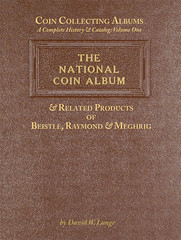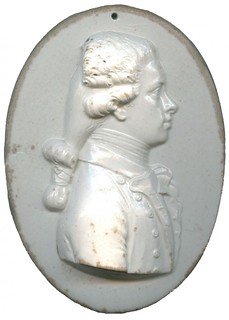
PREV ARTICLE
NEXT ARTICLE
FULL ISSUE
PREV FULL ISSUE
NOTES FROM E-SYLUM READERS: SEPTEMBER 15, 2013 National Coin Album Books Forthcoming
For more information on Dave's upcoming book, see: NEW BOOK: COIN COLLECTING ALBUMS, VOLUME ONE (www.coinbooks.org/esylum_v16n32a02.html) The Staying Power of Yap Stone Money Around the early 1960's, while serving in the U.S. Coast Guard in the Pacific area, I had the opportunity to visit the Island of Yap on various occasions. I became friendly with the natives and asked them about their stone money system and their rationale behind it. They told me; "The Germans came with their marks and left, The British came with their pounds and left, The Spaniards came with their reales and left, The Japanese brought their yens and are gone. Now the Americans have brought the dollars, and we don't know how long they are going to be here. But all the time, our stone money is still here." The main principle of the stone money is similar to the Gold Standard. As long as we have lots of it buried in Fort Knox, our paper money has value. This is why the U.S. exchanged the Puerto Rico peso at .60 cents to the dollar when we took over that island as a result of the Spanish/American war in 1898, notwithstanding the fact that the P.R. peso had slightly more silver than the U.S. silver dollar. Nevertheless, the Puerto Rican peso in today's market is worth from $300.00 to $10,000.00, depending on the condition. What goes out, comes back! To read the earlier E-Sylum article, see: MORE ON JOHN MAYNARD KEYNES AND YAP STONE MONEY (www.coinbooks.org/esylum_v16n37a18.html) Another Wedgwood portrait of the Vicomte de Noailles
Both the Baldwin's example and mine are correctly described as creamware factory reference models, as they were hung up and used as guides for Wedgwood's factory workers (hence the piercing, which occurs on all of the factory reference models I have seen). These reference models (although not the Noailles), frequently feature a sometimes amusing phonetic rendering of the subject's name inscribed on the back. For example, the Warren Hastings Wedgwood reference model in my collection is identified as A.Stain . To read the earlier E-Sylum article, see: BALDWIN'S 83RD SALE TO BE HELD SEPTEMBER 24, 2013 (www.coinbooks.org/esylum_v16n37a31.html) More on the Term Nova Eborac Eborac is an abbreviation -- as noted with the "." following EBORAC. No Latin word would end in "c".
Here's an excerpt from the article from the BBC about the history of the name of the town of York.
-Editor
Eboracum is the Roman name for York, but just how did we get from Eboracum to York? The answer involves boars, mistranslation and the oddities of the Nordic tongue! One aspect of the Roman legacy which is not as obvious is the city's name, York. Eboracum, the Roman name for York, sounds exotic and Latinised to our ears, and on initial consideration, appears to have little in common with the city's modern-day name. But in fact, the name York is a direct descendent of the name Eboracum. The Legio IX Hispana believed the name meant 'place of the boar'. Subsequently the boar appears on numerous inscriptions as a symbol of York. Following the Romans' departure in c400AD, the Anglo-Saxon invaders substituted Eboracum for their own word for boar and town, Evorwic. However, the next set of invaders, the Vikings, couldn't quite get their tongue round Evorwic, so they settled for Jorvik. Pronounced 'Yorvik' the step to York is hardly surprising. To read the complete article, see: What the Eboracum's it all about? (www.bbc.co.uk/northyorkshire/iloveny/romans/2004/eboracum_name/index.shtml)
To read the earlier E-Sylum article, see:
FEATURED WEB PAGE: NOVA EBORAC COPPERS
(www.coinbooks.org/esylum_v16n37a32.html)
The Numismatic Bibliomania Society is a non-profit organization promoting numismatic literature. See our web site at coinbooks.org. To submit items for publication in The E-Sylum, write to the Editor at this address: whomren@gmail.com To subscribe go to: https://my.binhost.com/lists/listinfo/esylum All Rights Reserved. NBS Home Page Contact the NBS webmaster 
|

